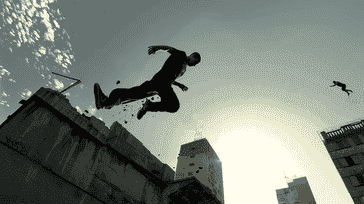Parkour Challenges: Overcoming Obstacles with Creativity and Skill

Introduction to Parkour
Parkour, also known as urban athletics, is an acrobatic discipline that involves navigating through man-made obstacles using a combination of running, jumping, climbing, and other athletic movements. It is a high-intensity training activity that requires strength, agility, and creativity. Parkour is not just a sport, but a way of life that challenges individuals to overcome physical and mental obstacles with skill and determination.
The Difference Between Parkour and Freerunning

While parkour and freerunning are often used interchangeably, there are slight differences between the two. Parkour focuses on efficiency and speed in getting from point A to point B, using the most direct route possible. Freerunning, on the other hand, emphasizes self-expression and creativity, incorporating flips, spins, and other acrobatic moves into the movements. Both disciplines share the same foundation of athletic movement and overcoming obstacles, but freerunning adds a unique artistic flair.
The History of Parkour
Parkour traces its roots back to the late 1980s in France, where it was developed by a group of nine friends known as the Yamakasi. Inspired by their urban surroundings, they sought to find new ways of navigating through the cityscape. They drew inspiration from various sources, including military obstacle courses, martial arts, and gymnastics. Over time, parkour gained popularity and spread worldwide, becoming a recognized sport and discipline.
Benefits of Practicing Parkour

Practicing parkour offers a wide range of physical and mental benefits. It improves strength, endurance, and flexibility, as well as enhances balance and coordination. Parkour also promotes quick thinking and problem-solving skills, as practitioners need to assess their environment and find the best way to overcome obstacles. Moreover, it instills self-confidence and a sense of accomplishment, as each successful jump or climb is a testament to ones abilities.
Parkour Equipment and Gear
Parkour requires minimal equipment, as it primarily relies on the individuals body and their surroundings. However, there are a few essential items that can enhance the practice. Comfortable athletic shoes with good grip are crucial to provide traction and protect the feet. Wristbands and gloves can provide additional support and prevent injuries. Some practitioners also use knee pads and elbow pads for added protection during more challenging movements.
Parkour Training and Techniques

Parkour training involves a combination of strength and conditioning exercises, as well as specific techniques for overcoming obstacles. Strength training exercises such as push-ups, pull-ups, and squats help build the necessary muscle power. Conditioning exercises like jumping and climbing drills improve endurance and agility. Techniques such as the precision jump, wall run, and cat leap are essential for navigating through various obstacles. It is important to start with basic movements and gradually progress to more advanced techniques under the guidance of a qualified instructor.
Overcoming Mental Obstacles in Parkour
Parkour not only challenges the body but also the mind. Overcoming mental obstacles is a crucial part of the discipline. Fear, doubt, and self-limiting beliefs can hinder progress and prevent individuals from pushing their boundaries. Developing mental resilience and a positive mindset is key to unlocking ones full potential in parkour. Visualization techniques, goal setting, and positive affirmations can help overcome mental barriers and build confidence.
Parkour Safety Tips
Safety should always be a top priority when practicing parkour. Here are some important tips to ensure a safe training experience:
- Warm up properly before each session to prevent injuries.
- Start with basic movements and gradually progress to more advanced techniques.
- Always assess your surroundings for potential hazards before attempting any movement.
- Practice on appropriate surfaces that provide good grip and stability.
- Listen to your body and take breaks when needed to avoid exhaustion or overexertion.
- Always train with a partner or in a supervised environment for added safety.
Famous Parkour Practitioners and Their Achievements
Over the years, parkour has gained recognition through the achievements of notable practitioners. Sebastien Foucan, one of the founders of freerunning, brought parkour into the mainstream with his appearances in commercials and movies. David Belle, another Yamakasi founder, is considered one of the pioneers of parkour and has inspired countless individuals to take up the discipline. Other renowned practitioners include Livewire, Jesse La Flair, and Ryan Doyle, who have showcased their skills through various media platforms and competitions.
Parkour Events and Competitions
Parkour has evolved from a niche activity to a competitive sport with its own events and competitions. The most prestigious of these is the Red Bull Art of Motion, where top athletes from around the world showcase their skills in a freestyle parkour competition. Other events include the North American Parkour Championships and the World Freerunning Championships. These competitions not only provide a platform for athletes to demonstrate their abilities but also promote the growth and development of parkour as a sport.
The Future of Parkour
As parkour continues to gain popularity, its future looks promising. The discipline has already made its mark in mainstream media and has been featured in movies, commercials, and music videos. With the rise of social media, parkour videos have garnered millions of views, inspiring a new generation of practitioners. The sport is also being recognized by various organizations, with efforts underway to establish formal training facilities and certifications. The future of parkour is one of continued growth and recognition as an exciting and challenging athletic discipline.
Conclusion
Parkour is more than just a physical activity; it is a mindset that challenges individuals to overcome obstacles with creativity and skill. By combining athletic movements with mental resilience, practitioners can push their boundaries and unlock their full potential. With its rich history, numerous benefits, and growing popularity, parkour is an acrobatic discipline that will continue to inspire and captivate individuals around the world.
Join the parkour movement today and discover the thrill of overcoming obstacles with creativity and skill!
